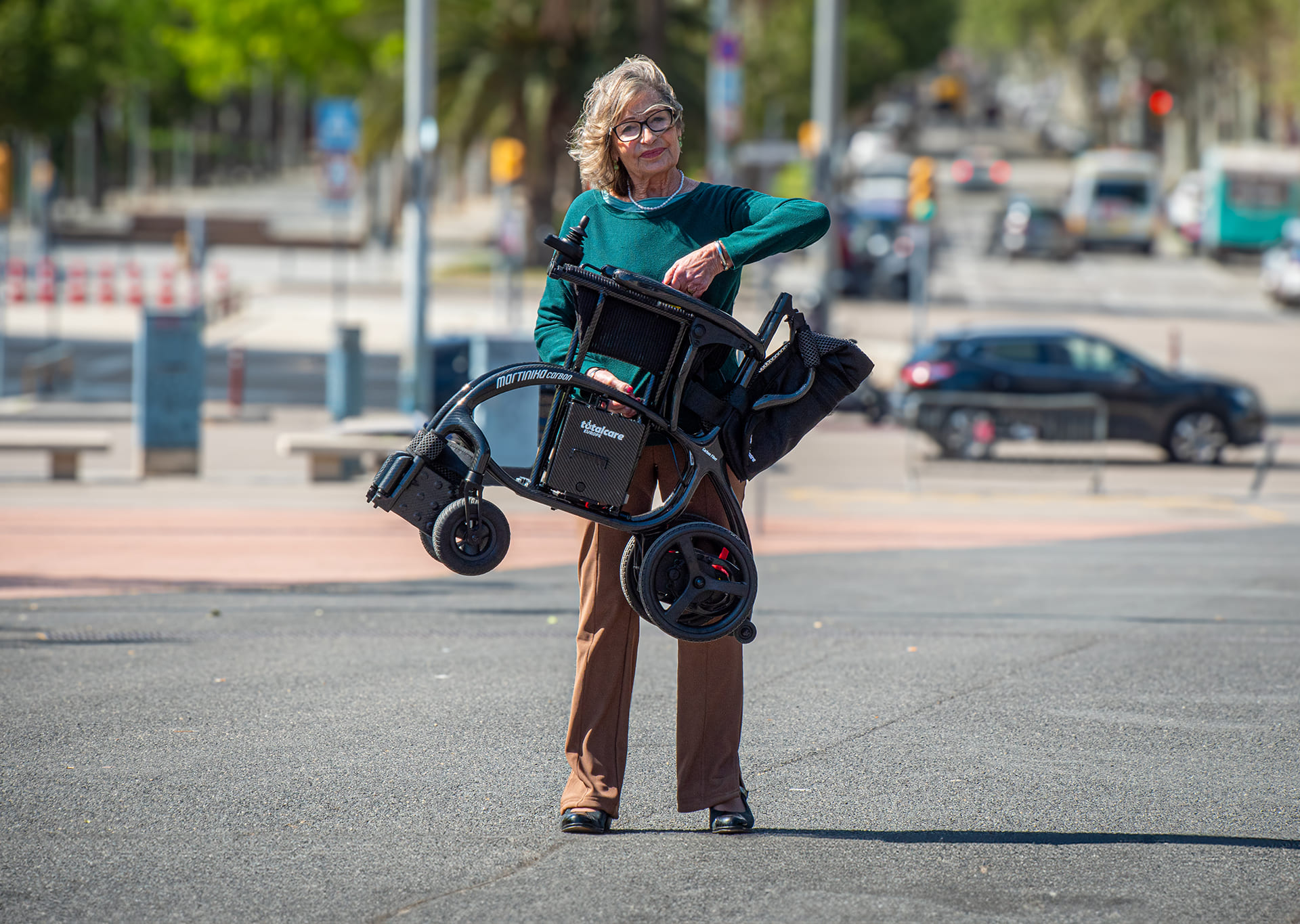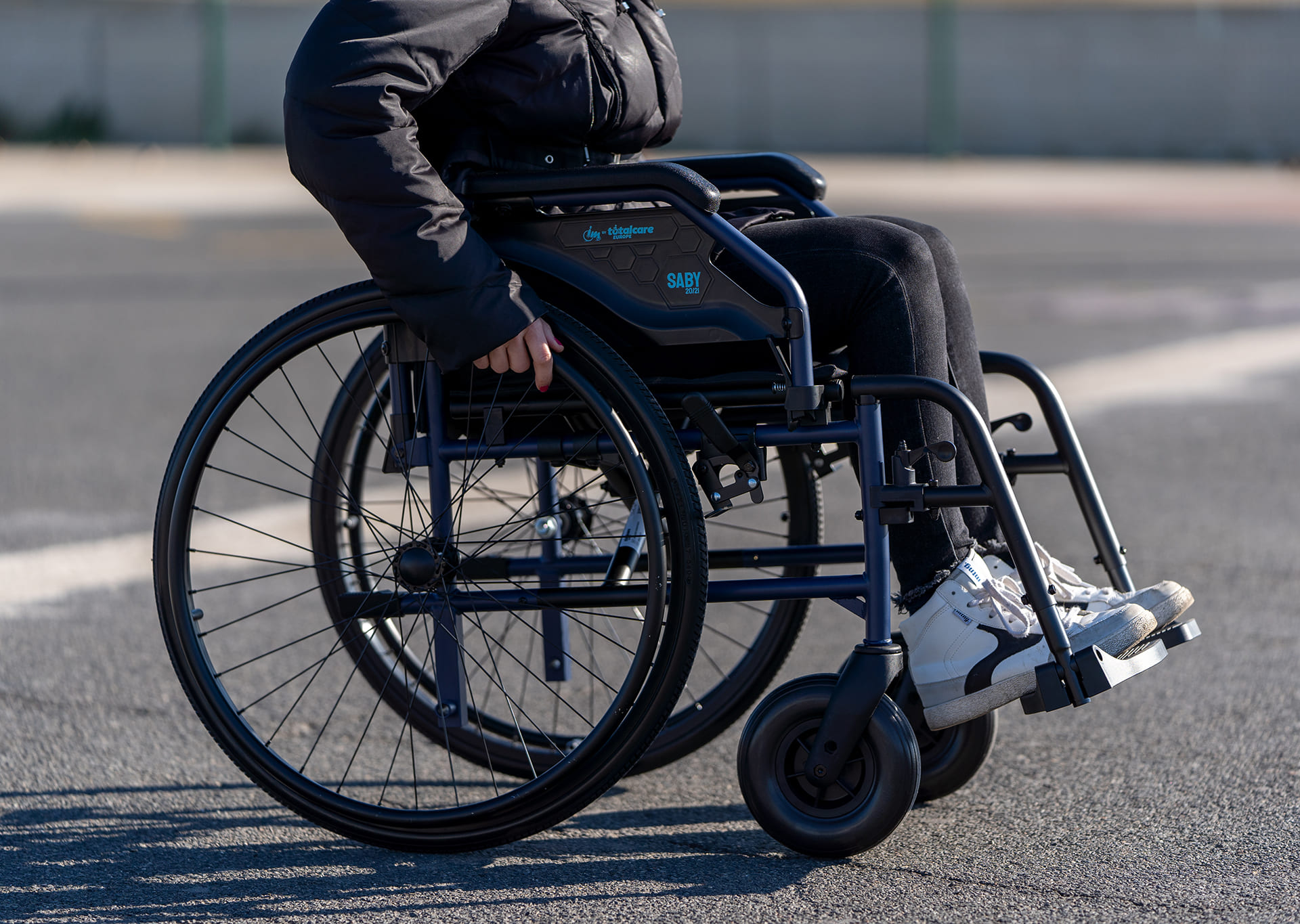
Ergonomic materials for wheelchairs: improving comfort and well-being
Choosing a suitable wheelchair not only involves considering its functionality, but also the comfort and well-being of the user. People who rely on a manual or electric wheelchair to get around must take into account a number of factors, such as weight, strength, comfort and ease of use. Therefore, the choice of ergonomic materials plays a crucial role in ensuring that chairs are both functional, lightweight, comfortable and easy to use. These types of materials improve the quality of life of people with reduced mobility, as they reduce the risk of injuries resulting from poor posture or sitting for prolonged periods.
With advances in technology and engineering, wheelchair manufacturers have innovated in the design of materials, making chairs lighter, stronger and more ergonomic. New materials allow the chair to be customized according to the specific needs of the user, offering more adaptable solutions for people with different types of mobility. In addition, wheelchair designs have improved to provide greater support, making it easier to move around and improve posture. In this article, we will explore how ergonomic materials, such as carbon fiber, contribute to the creation of more comfortable and functional wheelchairs.
Carbon Fiber: Lightness and Strength
Currently, one of the most innovative and lightweight materials used in the manufacture of wheelchairs is carbon fiber. This material has revolutionized the mobility industry, as it significantly reduces the weight of the chair, making it easier to handle and transport. Being lighter than traditional materials, carbon fiber allows people with reduced mobility to move more easily, without having to make great efforts to move or handle the chair.
But carbon fiber not only improves lightness, it is also known for its great strength and versatility. This material is extremely durable, able to withstand intensive daily use and resist impacts without compromising its functionality. Its high strength makes it an excellent choice for those who need a sturdy, long-lasting wheelchair suitable for both indoor and outdoor use.
Featured Models: Martinika Carbon and Kittos Carbon
On the market today, there are wheelchair models that stand out for their innovative technology and materials. The Martinika Carbon is an excellent example of a wheelchair made of carbon fiber, which combines lightness, strength and ergonomic design. Its structure, designed with high-quality materials, offers great strength and durability, while providing excellent maneuverability and comfort. This chair is ideal for those looking for a high-performance product without sacrificing comfort.
Another standout model that captures attention for its exceptional design, innovative features, and outstanding performance is the Kittos Carbon, which also uses carbon fiber in its structure. The Kittos Carbon is known for being an ultra-light and sturdy wheelchair, making it easy to handle both indoors and outdoors.
Conclusions:The importance of choosing the right materials
In summary, choosing ergonomic materials for wheelchairs is essential to ensure user comfort and safety. Materials such as carbon fibre are essential to improve the user experience and maintain mobility. Models such as the Martinika Carbon and Kittos Carbon demonstrate how innovation in materials can offer customised solutions for those who need a wheelchair that is not only functional, but also comfortable, lightweight and durable.
Choosing the right wheelchair is a crucial decision that can profoundly enhance the quality of life, comfort, and independence of elderly individuals or those with reduced mobility. By using ergonomic materials and advanced technologies, such as adjustable designs and customised seats, it is possible to ensure greater independence, comfort and well-being in the long term. These innovations not only improve posture and reduce the risk of injury, but also promote efficient mobility, allowing users to enjoy a more active and fulfilling life.







